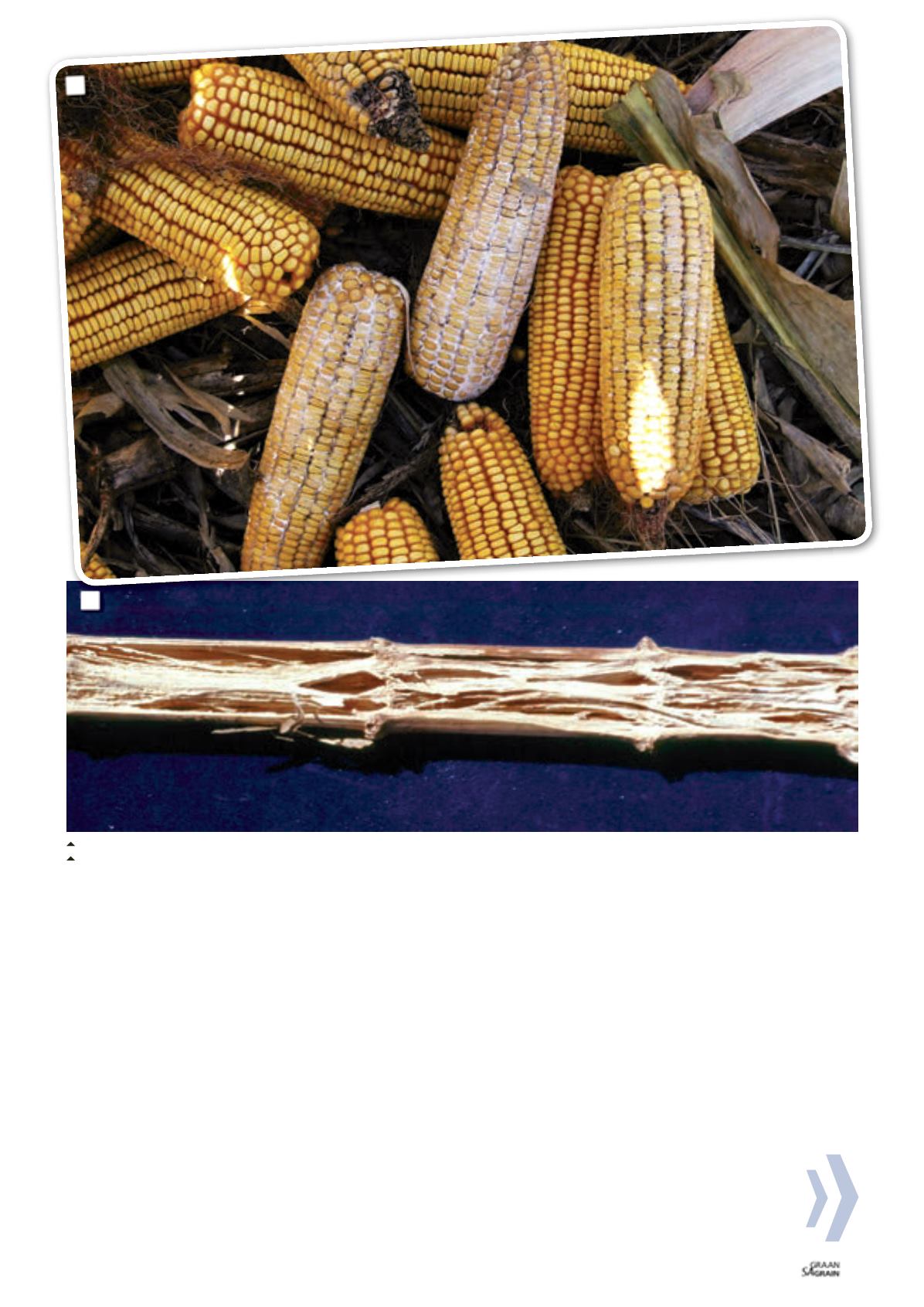
95
August 2014
Secondly, where a high percentage of rotten kernels are discarded
in the harvesting process, it will improve grain quality, but manifest
itself as yield loss.
Diplodia stalk rot reduces the ability of themaize plant to reach its
full yield potential by preventing adequate grainfill, i.e. a reduced
thousand kernel weight and by preventing the pollinated ear from
filling all kernels on the ear. This results in incomplete ears without
graindevelopingon the cob towards the tip.
Diplodiosis, a nervous disorder of cattle and sheep, results from the
ingestion of ears infected by
S. maydis
. Cases of diplodiosis occur
from six days to two weeks after the animals are placed on fields
with infectedmaize cobs.
The disease is characterised by reluctance of the animals tomove,
awide-based stance, inco-ordination, tremors, paralysis and death.
Myelindegeneration (status spongiosis) is themajor histopathologi-
cal change observed in affected animals. The disease also causes
abnormal foetal development and foetal death.
Fieldoutbreaksof diplodiosis insouthernAfricaare favouredby late,
heavy rainsandoccurduring the latewintermonths (July toSeptem-
ber). The practice of using harvestedmaize fields for winter grazing
is amajor contributing factor to outbreaks of thismycotoxicosis. In
addition to diplodiatoxin, newmetabolites, namely dipmatol, diplo-
nine and chaetoglobosins K and L, have recently been isolated from
S.maydi
-infected crops.
To date, none of the puremetabolites has been administered to ru-
minants in order to reproduce the disease. Until such time that the
toxicmetabolite(s) responsible for this disease are fully understood,
diplodiosis will continue to be reproduced experimentally only by
feeding naturally infected maize or pure cultures of the fungus or
their extracts to ruminants.
As previouslymentioned in this article, not all
S.maydis
isolates are
toxic. For example, two isolates from the same fieldmay be fed to
ducklings with one being toxic and the other not. This makes deci-
sions difficult on whether or not to use Diplodia-infected grain for
feed for certain animals.
Ruminants and poultry are found to be the animals most affected
by Diplodia-infected material. Milling-infected grain is thought to
reduce the heat-sensitive toxin and ensure that the total Diplodia-
infected grain content of feed rations is lower than 10%.
1: Diplodia ear rot.
2: Diplodia stalk rot.
1
2


